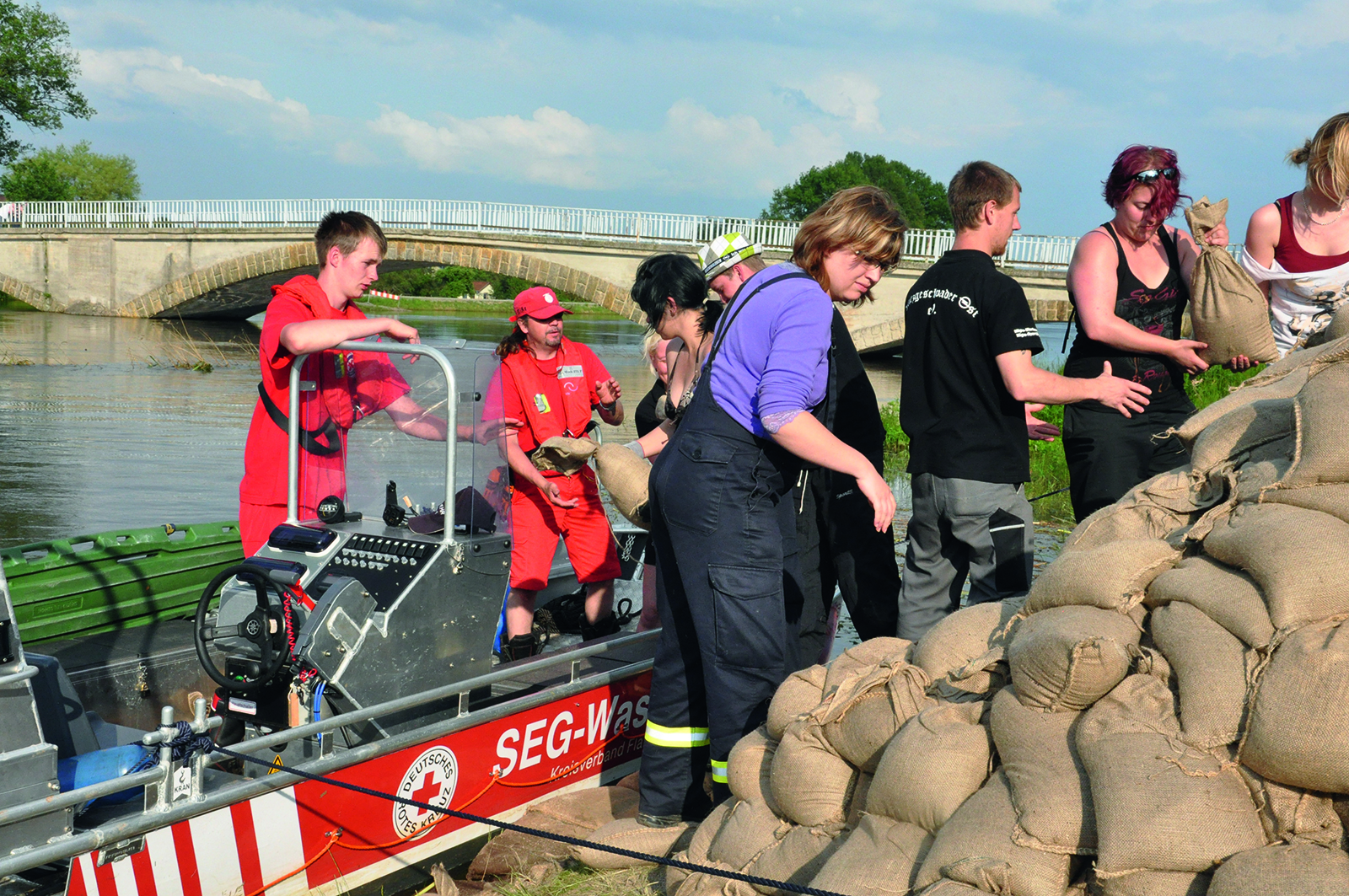Making effective use of voluntary help
In crisis situations, aid organizations have to manage the great numbers of volunteers who spontaneously appear wanting to help. In the INKA project, Fraunhofer researchers have taken a look at how to better recruit, retain and make effective use of volunteers in disaster control.

The flooding of the river Elbe in early summer 2013 was another reminder of just how important volunteer help is in a crisis situation. Thousands of people came out to help, filling sandbags or handing out food. The willingness of members of the general public to provide assistance in an emergency is as great as ever. But in recent years, we have seen a shift in the nature of that engagement. Germany still has many volunteer firefighters, members of the German federal agency for technical relief, or people who volunteer with other rescue organizations. Many of them, however, now feel unable to take part regularly – for instance due to work pressures or lack of family time. At the same time, many people want to help out in a crisis but don’t want to commit to be permanent members of an aid organization.
That’s why researchers from the Fraunhofer Institute for Industrial Engineering IAO in Stuttgart joined the project entitled “Professional integration of voluntary helpers in crisis management and disaster prevention.” This project, known as INKA, featured the German Red Cross as consortium head and also involved the Berlin fire department, the universities of Stuttgart and Greifswald, and the German national network for civil society. Its aim was to investigate how to recruit volunteers in the future, considering not just volunteers who are prepared to become a permanent member of an aid organization but also the more spontaneous helpers who want to chip in when there’s a real crisis.
Numerous workshops provided the researchers with the chance to analyze the situation in organizations and public authorities charged with security responsibilities. They also surveyed leaders and volunteers on the ground. “Lots of volunteers want to feel that more is being done to take their needs into account. It’s often the case that operations, training and exercises take up more time than they have to spare,” says Dr. Wolf Engelbach, head of department at the IAO. The study demonstrates that there are several ways to improve conditions for volunteers. For instance, volunteers in primarily administrative roles don’t have to be trained on every piece of technical equipment. It would also be good to make better use of volunteers’ skills – for instance technical expertise, foreign languages or teacher training.
It is important for aid organizations to provide specialists with leadership training as well as technical training. An alternative would be to spread tasks such as personnel development among more people. They could cater to spontaneous volunteers by offering them targeted training courses without obliging them to become members straightaway. “It also makes sense to develop databases of interested volunteers so that you can contact them directly in emergency situations,” says Engelbach.
Guidelines for aid organizations
INKA also yielded a final book containing scientific analyses and practical contributions in addition to guidelines for work within aid organizations. These include tips for how to engage spontaneous volunteers and how to recruit and retain permanent volunteers. The guidelines also explain how organizations can utilize social media to coordinate volunteers in crisis situations. For instance, they can use Facebook or WhatsApp to notify whole groups of people with a single message, and to selectively assign volunteers to specific tasks. These channels can also be exploited to broadcast pictures or video of the damage. Researchers will be presenting the findings from the INKA project, which was sponsored by the German Federal Ministry of Education and Research (BMBF), at the environment forum in Berlin on September 23.
Now there are two follow-up projects underway, KOKOS and DRIVER. KOKOS is again sponsored by the BMBF, and is looking at how to involve clubs, choirs and church groups in crisis situations. The partners in the EU-sponsored DRIVER project, meanwhile, are conducting experiments to analyze how to efficiently coordinate the work of spontaneous volunteers and organizations in crisis management.